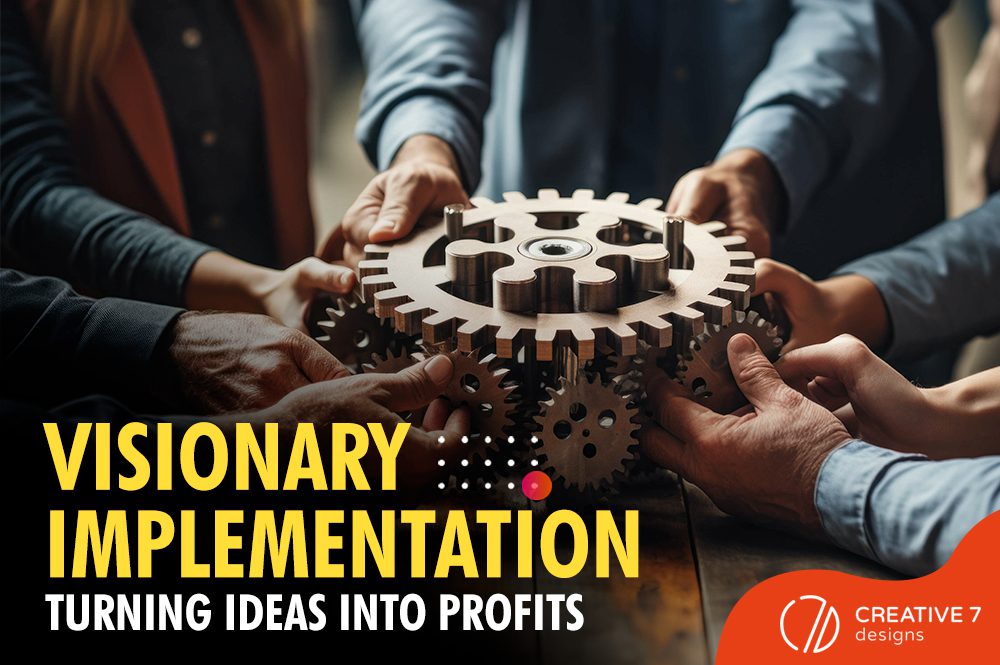Overview: Curious about transforming ideas into profits? We’ll show you how it’s done! Get ready for practical strategies, real-world examples, and actionable tips that can help your entrepreneurial journey thrive. Let’s maximize your profits together!
You have a brilliant idea that has the potential to change everything. You believe it will appeal to everyone and you’re passionate about it. You’re all set to execute it, but there’s a huge question mark hanging over your head: How do you turn this idea into a profitable reality?
It’s a common dilemma that many visionary entrepreneurs face. The path from concept to profitability can be filled with obstacles and uncertainties. Resources being depleted, failure, anxiety, self-doubt, and analytical paralysis are just a few of the traps they fall into. If you’re one of those who are impatiently waiting for precisely the appropriate opportunity to rise, you’ll miss all the fun.
At times, a leap of faith and right strategies are your way to win. Perfection doesn’t exist — so the only way to turn your vision a reality is to put in a lot of effort and draw lessons from your errors.
In the following sections, we’ll delve deeper into the strategies and best practices that can help you overcome these uncertainties and achieve your entrepreneurial dreams.
Ideation and Visionary Thinking
Before we delve into the implementation phase, it’s crucial to emphasize the significance of visionary thinking. Visionary thinking involves the ability to see opportunities where others might not, and envision a future that differs from the present. Here are some tips for fostering visionary thinking:
Stay Curious: The world is constantly evolving, and visionary thinkers stay ahead by staying curious. Devote time to reading industry publications, attending conferences, and engaging in discussions with experts and peers. Never stop learning! The more you know about your field, the more likely you are to spot trends and identify gaps where your visionary idea can thrive.
Think Beyond the Present : Visionary thinking isn’t limited to immediate gains. It’s about envisioning a future that might differ significantly from the present. Ask yourself questions like, “How can this idea evolve over the next five or ten years?” Consider the long-term implications and prepare for the changes that may come along the way.
Cultivate a Culture of Innovation : In your organization, encourage a culture of innovation where all team members are empowered to contribute their ideas. Reward and recognize innovative thinking and create an environment where employees feel safe to experiment and take calculated risks.
Strategic Planning
Once you have a visionary idea, the next step is to create a strategic plan. This plan should outline the steps you’ll take to bring your idea to fruition. Here’s how to approach strategic planning:
Market Research: Conduct thorough market research to understand your target audience, competition, and market trends. This information will help you refine your idea and identify potential pitfalls.
Set Clear Objectives: Define clear, measurable objectives for your project. What are your financial goals, and what metrics will you use to track progress?
Resource Allocation: Determine the resources, both financial and human, required for your project. Allocate resources efficiently to ensure a smooth implementation process.
Risk Assessment: Identify potential risks and challenges that may arise during implementation. Develop contingency plans to mitigate these risks.
>> Related Reading: Strategic Planning: A 10-Step Planning Process
Execution and Adaptation
Implementation is where the rubber meets the road. Here’s how to execute your visionary idea effectively:
Assemble a Talented Team: Surround yourself with a team of experts who can help bring your idea to life. Ensure everyone understands the vision and their role in achieving it.
Monitor Progress: Regularly track progress against your objectives. Make necessary adjustments if you’re not meeting your goals or if market conditions change.
Adaptability: Always be flexible and open to adjustments. Sometimes, the initial plan may need to be modified based on real-world feedback and data.
Continuous Learning: Encourage a culture of continuous learning within your organization. Adaptation and improvement should be ongoing processes for yourself, your employees, and your partners.
Marketing and Branding
To turn your idea into profits, you need to market your product effectively or service. Develop a compelling brand identity and marketing strategy:
Unique Selling Proposition (USP): Highlight what sets your product or service apart from the competition. This could be innovation, quality, or exceptional customer service.
Online Presence: Establish a strong online presence through a well-designed website, social media, and online advertising. Leverage digital marketing to reach a broader audience.
Customer Engagement: Build strong relationships with your customers. Listen to their feedback and use it to improve your product or service continually.
Here’s a reading on Branding and Marketing: How to Grow Your Firm
Take Consistent Actions Everyday
The key to achieving any goal begins by showing up everyday — even if you have 45 minutes a day to do this, use those minutes wisely and be productive.
Be Creative: Don’t wait for external inspiration or motivation to strike. Miracles happen when you create a routine or a habit that supports your goal. For instance, if you’re a writer working on a book, set a daily word count goal and write it first thing in the morning before checking your social media or emails. You can always make edits later.
Let Go of Perfectionism: You read that right. The fear of a failure or perfectionism is one of the paralyzing emotions that entrepreneurs face. It can stop you from pursuing your dreams — or the will to take a risky step for your business. Remember that failure is a part of the learning process. If you’re passionate about launching a podcast, don’t worry about having the best mic or equipment on day 1. Just record your first episode, and focus on ways to improve as you go along.
It all starts with baby steps!
Stay Focused: Don’t compare your chapter 1 with someone’s chapter 25. Everyone has a different journey and struggles, which is why it’s important to celebrate your wins along the way. Let’s assume that you want to grow your social media following — don’t obsess about how many followers others have; they may be doing it for over years. Just post valuable content consistently, and be authentic to your audience.
Paulo Coelho, in his best-selling book, The Alchemist said: “When you want something, all the universe conspires in helping you to achieve it.” Let’s take some inspiration from there! 🙂
In Summary
Visionary implementation is a multi-faceted process that involves creativity, strategic planning, and effective execution. Turning your ideas into profits requires dedication, adaptability, and a willingness to learn from both successes and failures. By fostering visionary thinking, carefully planning, and executing your vision with precision, you can bring your innovative ideas to life and transform them into profitable ventures.
Remember, the journey from idea to profit may be challenging, but with the right mindset and strategies, it’s entirely achievable. Consider partnering with a trusted digital marketing agency with voices of satisfied customers who’ve walked the talk and can vouch for their credibility — like Creative 7 Designs.
Scroll around our website and see why we’re the best choice for you! It’s not about what we do — but how we do it!


